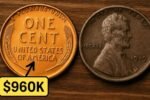Silver Roosevelt Dimes: The Silver Roosevelt Dime might look like just another small coin today, but behind its shiny surface lies a powerful story of American pride, unity, and post-war change. Introduced after World War II, this coin not only honored a beloved president but also captured the spirit of a nation moving forward after years of hardship. Even decades later, these dimes remind us of a time when the country rebuilt itself with determination and hope.
The Birth of the Roosevelt Dime
The Roosevelt Dime was first minted in 1946, the year after President Franklin D. Roosevelt’s death. It replaced the Mercury Dime, which had been in circulation since 1916. The new dime wasn’t just a random design change; it was America’s way of paying tribute to a leader who guided the country through the Great Depression and most of World War II. Roosevelt’s image on the coin symbolized courage, progress, and care for the people. The dime’s introduction shortly after his passing made it a meaningful piece of history that Americans could carry in their pockets every day.
Why Silver Was So Important
Until 1964, all Roosevelt Dimes were made of 90% silver. This choice wasn’t just about beauty—it reflected the value and trust that silver held in American currency. During the 1940s and 1950s, silver coins represented real wealth and stability. They had a lasting worth that went beyond face value.
However, as the price of silver rose in the early 1960s, it became too expensive for the U.S. Mint to keep using the metal. In 1965, the dime was changed to a copper-nickel composition, ending the era of true silver dimes. For collectors today, those pre-1965 coins are more than just old change—they’re pieces of precious metal history that tell us how much the economy and priorities of the nation have evolved.
A Symbol of American Resilience
The Silver Roosevelt Dime was born at a time when America was recovering from the devastation of World War II. Factories were shifting from producing weapons to consumer goods, soldiers were returning home, and families were starting new lives. The dime represented the small yet powerful signs of growth and hope.
Carrying Roosevelt’s image, it reminded people of leadership during hard times. The torch, olive branch, and oak branch on the reverse side of the coin symbolized liberty, peace, and strength—three values deeply connected to post-war America. Each time someone held a dime, it was a quiet but meaningful reminder that the nation had survived and was rebuilding itself.
How the Dime Reflected Everyday Life
In the late 1940s and 1950s, a dime could buy quite a lot—a newspaper, a bottle of soda, or even a phone call from a payphone. It was small change, yet it carried big value. Families saved silver dimes in jars, children used them for treats, and workers dropped them into jukeboxes after long days.
This tiny coin was a part of daily American life, representing a time when hard work, family, and community were at the heart of the nation’s growth. The dime’s presence in everyday moments connected people from all walks of life, making it not just a piece of metal but a symbol of shared experience.
The Collectors’ Treasure Today
Today, silver Roosevelt Dimes are highly valued by coin collectors and history lovers. Their silver content alone gives them worth, but their real value lies in what they represent—a bridge between two eras of American history.
For many, owning a silver dime is like holding a piece of the 1940s and 1950s in their hands. It’s a tangible link to the past, reminding us of a period when the country rose from challenges stronger than before. These coins have become symbols of pride, perseverance, and progress—traits that defined post-war America.
Lessons from a Small Coin
The story of the Silver Roosevelt Dime teaches us that history isn’t only found in books or monuments—it can live in the smallest things we often overlook. This dime represents leadership, sacrifice, and unity. It reflects the nation’s ability to adapt, survive, and grow.
Even though silver is no longer used in modern dimes, the legacy of the original design continues. Each time we see Roosevelt’s face on a dime today, we’re reminded of the values that helped America rebuild after one of its toughest times.
Conclusion
The Silver Roosevelt Dime is more than just old currency—it’s a story in metal form. It tells of a nation that honored a great leader, rebuilt after war, and believed in a brighter future. From its silver shine to its meaningful symbols, this coin remains a quiet but powerful reminder of America’s post-war spirit. Every old dime that still exists today whispers the same message: strength, hope, and unity never go out of style.
FAQs
When was the first Roosevelt Dime made?
The first Roosevelt Dime was released in 1946, one year after Franklin D. Roosevelt’s death.
Why were Roosevelt Dimes made of silver?
They were made of 90% silver to maintain their value and match the standards of U.S. coins at the time.
When did silver dimes stop being made?
The U.S. Mint stopped producing silver Roosevelt Dimes after 1964 due to rising silver prices.
Are silver Roosevelt Dimes valuable today?
Yes, they are worth more than face value due to their silver content and historical importance.
What does the design on the dime mean?
The torch symbolizes liberty, the olive branch stands for peace, and the oak branch represents strength—values central to post-war America.




